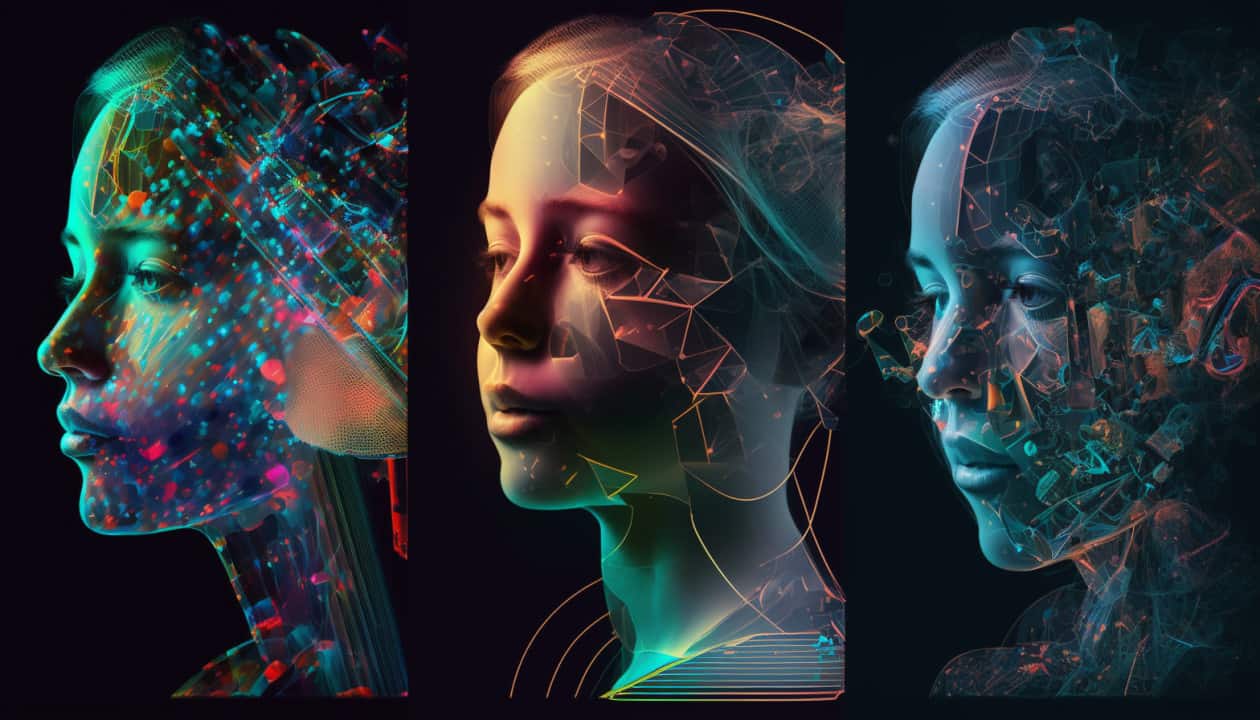In the wake of the AI Renaissance, the world is witnessing a transformative phase that intertwines human ingenuity and artificial intelligence. The rapid evolution of AI has transcended traditional problem-solving applications, propelling the realm of creativity and imagination into uncharted territory.
This new Creative RenAIssance is characterized by the astonishing capabilities of AI-driven generative models capable of producing art, music, literature, and poetry. This article delves deeper into the dawn of this Era, highlighting the emergence of creative AI, understanding its inner workings, ethical implications, and the potential for harmonious human-AI collaboration.
Advancements in generative models, intense learning, and neural networks have catalyzed the rise of creative AI. Language models like GPT-3 and image generators like DALL-E have become torchbearers of AI’s creative potential. By training on extensive datasets, these models learn to emulate human style, tone, and structure, blurring the lines between human and AI creativity.

Also Read: James Cameron Refuses That He Will Bring OceanGate Tragedy to the Big Screen: Exploring Deep Waters
The Artistic Impulse in Machines: Unveiling the Creative AI Phenomenon
The mysteries of AI creativity lie at the heart of interdisciplinary research that merges computer science, neuroscience, cognitive psychology, and aesthetics. The interplay of neural network architectures, the quality and size of training data, and the choice of optimization algorithms all contribute to the final creative outputs of AI systems.
However, defining AI creativity presents a significant challenge. Traditional measures of ingenuity applied to human beings, such as originality and emotional expression, become elusive when judging AI-generated content. Consequently, novel frameworks for evaluating and appreciating AI creativity are required to fathom its true potential.
Navigating the Ethical Landscape: Ownership and Attribution in AI-Generated Art
As AI ventures into creative domains, ethical considerations arise concerning authorship, intellectual property, and attribution. Determining rightful ownership of AI-generated works becomes complex when machines autonomously produce content.
Additionally, AI-generated art raises questions about the value of human artistic expression and the potential devaluation of human creativity. Rather than replacing human creators, AI offers unparalleled opportunities for collaboration and inspiration.
By embracing AI as a creative partner, human artists, writers, and musicians can tap into vast datasets, experiment with new styles, and leverage AI-generated content to enhance their own creative expressions. This synergy can lead to entirely new artistic genres and push the boundaries of human imagination.

Human Touch in a World of AI: The Enduring Value of Human Creativity
The creative potential of AI extends beyond the arts and literature as it finds applications in scientific research and innovation. AI-driven algorithms accelerate drug discovery, analyze complex datasets, and propose novel hypotheses, augmenting human capabilities and propelling scientific progress to unprecedented levels.
The AI renaissance is not the dawn of AI domination but the dawn of human creativity amplified by AI. In its current form, AI lacks the innate ability to understand, dream, and imagine—the essence of human creativity. Thus, human creativity remains the most valuable commodity, driving innovation and pushing humanity forward.
AI-Assisted Imagination: Exploring New Frontiers of Creativity
The EraEra of the Creative calls for a harmonious collaboration between AI and human creators. While AI can automate tasks and inspire new ideas, it cannot replace the magic of human imagination. Just as the great artists of the Renaissance embraced innovative techniques while preserving their artistic integrity, today’s creatives can harness AI’s potential while maintaining their unique human touch.

The Creative RenAIssance is upon us, and the future belongs to the creatives—the dreamers, innovators, and visionaries. As we navigate the uncharted territories of AI creativity, embracing AI as an ally and understanding its limitations will shape a future where human imagination drives innovation. The dawn of this EraEra heralds a time of limitless possibilities, where human-AI collaboration unlocks the true potential of creativity in reshaping our world for the better.
As we forge ahead, let us foster interdisciplinary collaborations and invest in responsible AI research, ensuring that AI remains a force for good and a catalyst for human creativity. The journey ahead beckons, and with the right balance between human ingenuity and AI’s capabilities, we embark on a voyage of boundless creativity and imagination.




